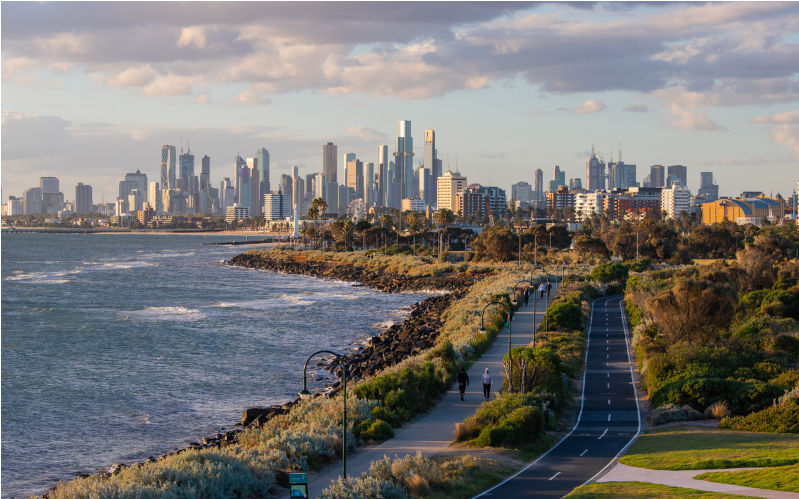The Commonwealth Grants Commission’s annual updates of its recommendations as to how the revenue from the GST should be carved up among the states and territories almost always contain a few surprises – pleasant for some, and unpleasant for others, since carving up a pie is, by definition, a “zero sum game”.
This year’s update, for the 2025-26 financial year, released on 14 March, contained a few more surprises than usual, because it incorporated the results of the review of its methodology which it only undertakes every five years, as well as the more regular results of shifting forward by one year the three-year rolling averages of the data it uses to assess the relative capacity of each state and territory to raise revenue from its own sources, and what each needs to spend in order to provide the average level of public services to its citizens.
One thing that wasn’t a surprise was that Western Australia will be getting $6 billion more in 2025-26 than it would have done had the “rules” governing the distribution of GST revenues not been altered by the Morrison Government, with the support of the then Labor Opposition back in 2018, support continued and extended by the Albanese Government since coming to office in 2022 (in what I call The Worst Public Policy Decision of the 21st Century Thus Far).
Those who are calling for (among other things) an increase in the JobSeeker Allowance or the level of Commonwealth Rent Assistance should be outraged that the Albanese Government has been willing to send more than $36 billion across the Nullarbor to Australia’s richest state — over and above what it would otherwise have been entitled to — and yet says it “can’t afford” these measures.
Queensland was surprised, and angered, at seeing its GST share fall by almost $1.2 billion from what it will receive in the current financial year. But it shouldn’t have been. Its Treasury should have known that the Grants Commission’s recommendations for 2025-26 would be based on its assessment of, among other things, Queensland’s capacity to raise revenue from coal royalties over the three years to 2023-24, which was substantially boosted by the surge in coal prices following Russia’s invasion of Ukraine in February 2022.
But undoubtedly the biggest surprise was the $3.6 billion increase in Victoria’s share of GST revenues in 2025-26 compared with what it will receive this financial year – implying that, for the first time ever, Victoria will be receiving a larger share of the revenue from the GST than it would if that revenue were to be distributed on an “equal per capita” basis (as Victoria, along with New South Wales and, much more recently, Western Australia, has long argued that it should be).
In other words, Victoria has joined South Australia, Tasmania and the two territories as what Western Australians have started referring to as “mendicant states” (although of course Western Australians never used that phrase during the seven decades in which they received a larger share of “untied” grants from the Federal Government than they would have on an “equal per capita” basis).
As the Grants Commission explains it, this “windfall” for Victoria stems primarily from three factors.
First, Victoria (like the ACT and Tasmania) has very little capacity to raise revenues from mineral royalties (unlike Western Australia, in particular). The large increase in Queensland’s, and to a lesser extent NSW’s, capacity to raise revenue from coal royalties (as a result of the aforementioned surge in coal prices following Russia’s invasion of Ukraine) has resulted in a decline in those two states’ “need” for GST revenues, which results automatically in an increase in the GST shares of other states and territories (all else being equal). Ironically, WA benefitted from this too, because of the fall in iron ore prices from their peaks earlier this decade.
Second, Victoria (and NSW) benefitted from a change in the Grants Commission’s method for assessing the “need” for spending on health and business support measures during the COVID pandemic. In this year’s Update, the Commission assumes that “state responses to the pandemic largely reflected circumstances outside state control, rather than being predominantly driven by state policy decisions … similar to the impacts of a natural disaster” – a reversal of the position adopted in previous years. In a masterly piece of under-statement, the Commission notes that this was “a contested issue”.
Third, but relatedly, because Victoria experienced an exodus of population during the pandemic, and particularly in 2020-21 (which dropped out of the three-year moving average used to assess “expenditure needs” in this year’s Update), before rebounding in 2022-23 and 2023-24, Victoria has experienced a sharper increase in population growth than other states and territories, which boosts its assessed “expenditure needs” and hence its GST share.
More fundamentally, however, Victoria’s “graduation” into the ranks of “mendicant” states is consistent with the fact that, since the turn of the century, Victoria has become a relatively “poor” state, as measured by metrics such as per capita gross state product (on which Victoria now ranks ahead of only South Australia and Tasmania), and per capita household disposable income (on which Victoria now ranks behind even Tasmania, ahead of only South Australia). And, as I explained in these pages last November, that is almost entirely the result of Victoria’s cellar-dwelling productivity performance – the slowest of any state or territory over the past 24 years.
Some of Victoria’s GST “windfall” for 2025-26 will likely be reversed in next year’s Update, as the COVID-afflicted 2021-22 financial year “drops out” of the Grants Commission’s assessments, and as coal and iron ore prices fall further (as they likely will). So the Victorian Government would be well advised to use its windfall to pay down debt, rather than to fund new spending. But, in the long run, unless it can substantially improve its productivity performance, Victoria will continue to be the butt of sneering from richer states, as South Australia and Tasmania have long been.
Republished from AFR, March 16, 2025
Saul Eslake worked as an economist in the Australian financial markets for more than 25 years, including as Chief Economist at McIntosh Securities (a stockbroking firm) in the late 1980s, Chief Economist (International) at National Mutual Funds Management in the early 1990s, as Chief Economist at the Australia & New Zealand Banking Group (ANZ) from 1995 to 2009, and as Chief Economist (Australia & New Zealand) for Bank of America Merrill Lynch from 2011 until June 2015.

